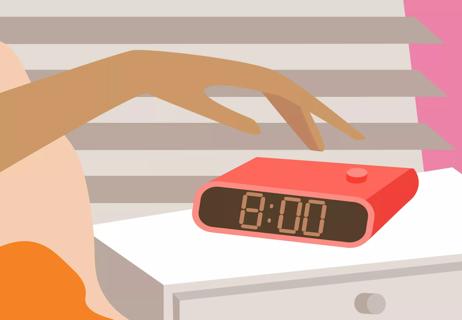
… Dr. Drerup, two disorders are major culprits:Untreated sleep apnea, a disorder that causes you to stop breathing while asleep. When this happens, your brain tries to protect you by waking you up enough to …

… or higher.Skin that is hot, red or dry.Feeling disoriented or confused.Dizziness.Rapid pulse and breathing.Fainting.If you think a person has heatstroke, seek emergency medical care. Get them to a cooler …

… move around,” Dr. Zanotti reinforces. “So, if you’re on your back and having a little trouble breathing or maybe your heart is beating faster, it’s your body’s way of saying you need …

… it’s also called lockjaw.Diphtheria: This highly contagious bacterial infection causes significant problems with swallowing and breathing.Pertussis (whopping cough): This respiratory infection causes severe and violent coughing and can be life-threatening in …
Advertisement
Cleveland Clinic is a non-profit academic medical center. Advertising on our site helps support our mission. We do not endorse non-Cleveland Clinic products or services. Policy

… be an indicator for overall fitness.Body temperature. A higher-than-average temperature could signal an infection.Breathing and heart sounds. That stethoscope providers wear around their necks isn’t just for show. The tool …

… by triggering a number of biological processes in your body that include increasing your heart rate and breathing ability, slowing down your digestion and improving your eyesight and reflexes — all things that improve your survivability …

When your child is feverish and nauseous with a stomachache, it’s usually just a 24-hour bug. Symptoms are often curbed with chicken noodle soup, lots of liquids, cuddles and the promise of watching …

Are you dealing with hours of morning stiffness and waking up at night from back pain? The symptoms of ankylosing spondylitis (AS) — an inflammatory autoimmune disease — can make it difficult to move and focus on …

We’re not sure exactly where the myth “Real men don’t cry” came from, but it’s exactly that: A myth. And it’s a dangerous one that’s taken root in our society …

The abdominal pain, gas, diarrhea or constipation of irritable bowel syndrome (IBS) can irritate more than your gut. Ongoing symptoms can irritate your mind as well, making you feel anxious, depressed, annoyed or just plain …
Advertisement
Advertisement